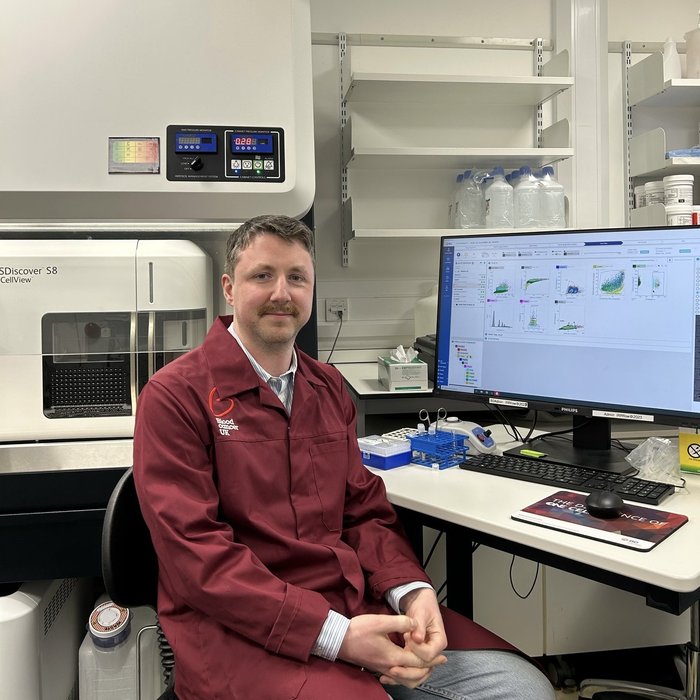Understanding how B-cell acute lymphoblastic leukaemia (B-ALL) spreads to the brain
B-cell acute lymphoblastic leukaemia (B-ALL) often spreads to the brain and spinal cord, this makes it harder to treat, especially when in children. Dr Duguid will develop a new way of studying brain tissue in detail, so they can find new and more effective ways to treat the disease.

Dr Alasdair Duguid
The challenge
B-ALL occurs when too many white blood cells, called B-cells, are produced in the bone marrow. It is the most common type of blood cancer in children. B-ALL often spreads to the brain and spinal cord. This makes it harder to treat, especially when in children. Current treatments for leukaemia in the brain can have serious side effects and we still don’t fully understand how the disease behaves in this part of the body. Some newer treatments work well in the blood but not so well in the brain. This is partly because the area around the brain doesn’t have much oxygen or nutrients, making it hard for medicines to work there. Now researchers have developed models that shows how leukaemia spreads to the brain more accurately and they also have a new way to study the brain’s protective layers without damaging them but there is still lots they need to learn and understand about how the cells react and behave.
The project
In this pilot project Dr Duguid and his team will look to understand how different types of cells interact in the protective layers of the brain using a model of B-ALL. They will then use this model to help them create a detailed map of the brain environment in leukaemia. Looking at individual cells, they will study how leukaemia cells, immune cells, and other supporting cells behave and interact with the brain’s protective layers. They hope to be able to identify key interactions between leukaemia cells and surrounding brain cells that might help the cancer cells to grow, avoid the immune system, or resist treatment.
The future
If successful, it’s hoped that this research could lead to new and more effective ways to treat leukaemia when it spreads to the brain. Researchers hope that by investigating how leukaemia interacts with the brain and its protective layers, they can find safer and more effective treatments that will target the cancer cells but cause less harmful side effects. Ultimately, this could lead to a future that could improve survival and quality of life for people with B-ALL. It is also hoped that this research could benefit many types of blood cancers that can also spread to the brain such as other types of leukaemia and lymphoma.
Funding
This project is part of the innovative pilot grant round.
